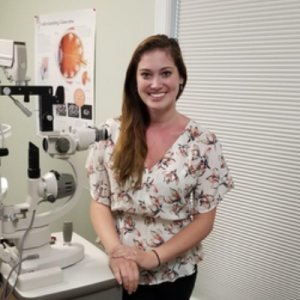Color blindness affects approximately 1 in 12 men and 1 in 200 women in the world.
Imagine seeing all reds and greens as muddy brown – this impacts the lives of almost 10% of all men.
Here are some tips to help those with color vision deficiency (CVD), also known as color blindness. This condition is more complex than most people understand.
At work
While most people with CVD find that their lack of color vision isn’t a problem in their daily lives, certain professions rely on accurate color perception more than others.
For example, electricians, commercial artists, all types of designers. Individuals with manufacturing and marketing jobs also rely on color vision.
Imagine not being able to discern between red and green colors and then trying to find the red wire… whilst knowing using the green will cause 1000 volts to surge through you.
At home
Most CVDs are minor and produce little or no discomfort, but they can have a considerable influence on daily living in their more severe forms.
For example, a cook may be unable to identify whether a piece of meat is raw or overcooked, and the inability to distinguish ketchup from chocolate syrup has obvious consequences.
Meanwhile, individuals with CVD can make things easier by adapting various strategies such as labeling and organizing clothing or accessories for a child to assist them in matching his own clothing, allowing them to be more self-sufficient.
If you are color blind, contact an eye doctor near you to discuss more tips and tricks.
SEE RELATED: The Importance of Pupil Exams
At school
If your child is colorblind, it can make classroom activities difficult. For example if a child is asked to color grass, they may not know which crayon is green.
The first thing a parent should do is let their child’s teacher know they are colorblind.
In addition, ask the teacher to make small changes in the classroom to help your child such as:
- Creating handouts that use only black ink on white paper
- Labeling paints and other art supplies with basic names
- Allowing the child to sit in the front so they can easily see the board
- Writing only with white chalk on a blackboard and only with black markers on a whiteboard
- Using patterns or labels for tasks that rely on color, like ‘blue circle’ instead of just ‘circle’
Parents should inform a child’s teachers that reading colored print on colored backgrounds may be a challenge, and that color coding may be meaningless to a child with CVD.
The child should be encouraged to develop their own adaptation strategies, which may prove to be more effective in the long run.
Driving
Driving is a high risk challenge for people with CVD, especially in low light conditions such as dusk or night.
Traffic lights have red at the top and can be recognized by their brightness and position, but being able to quickly discern between red and green lights whilst driving at night can be very difficult.
Imagine not being able to tell a red traffic light from a green… the consequences are too confronting to think about.
Warning and traffic instruction signs can often be identified by their shapes, however their intention is often identified by color. For example, stop signs are usually red in color, indicating a potentially severe and dangerous outcome if not followed.
Food shopping
Trying to pick ripe fruits and vegetables can be difficult for someone with color blindness.
Luckily there are other ways to find out if a fruit or vegetable is ripe besides looking at its color.
Here are a few examples of how to find ripe fruit:
- Apples – firm, not soft or ‘floury’
- Asparagus – straight stalks and tight buds
- Avocados – when you press on them they need to have a little give, but not too much
- Cantaloupe or melon – smell sweet and have no evidence of a stem
- Carrots – firm, smooth, well shaped
- Cucumbers – firm and well shaped
- Pineapples – smell sweet, feel heavy and have leaves you can pluck off easily
- Potatoes – fairly smooth, well-shaped, firm and free of most blemishes and sprouting
If you still find food shopping challenging, you can search online or ask someone at the grocery store for more help.
Living with color blindness doesn’t have to be difficult, and there are many ways to adapt to living with color issues and still maintain the highest quality life.
LEARN MORE: Guide to Eye Exams
Schedule an appointment with an eye doctor near you to find out more on what you can do to live life with color blindness.
While there’s no treatment or cure for inherited CVD, if it’s caused by illness or injury, treating an underlying cause is important.
Over 12% of all males are color blind, but they can live life to the fullest with a few adaptations at work, home and in the classroom.










